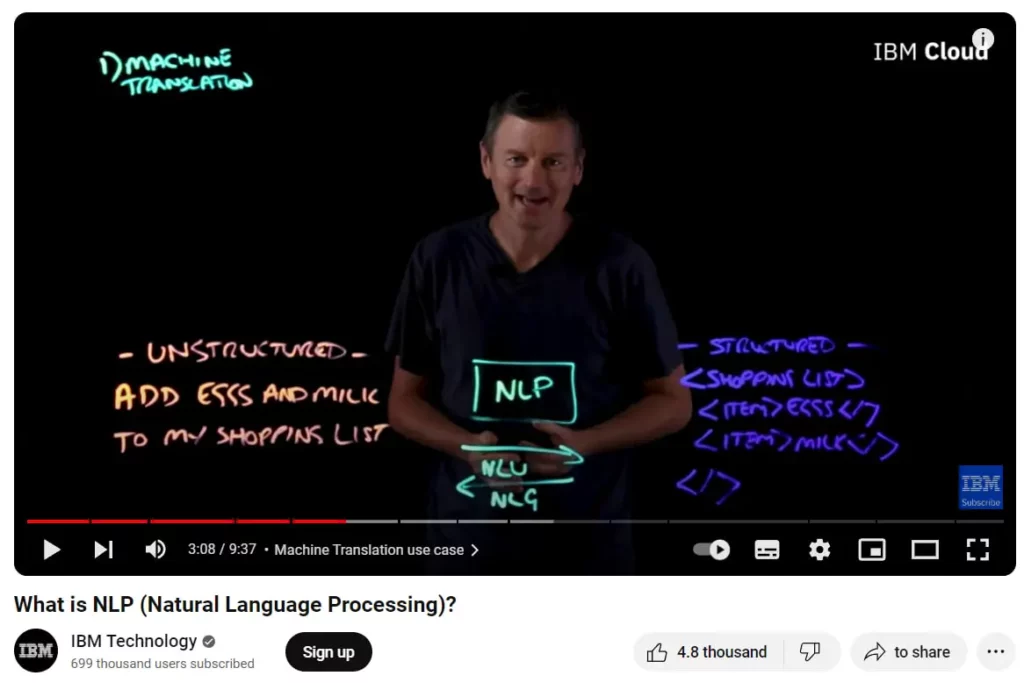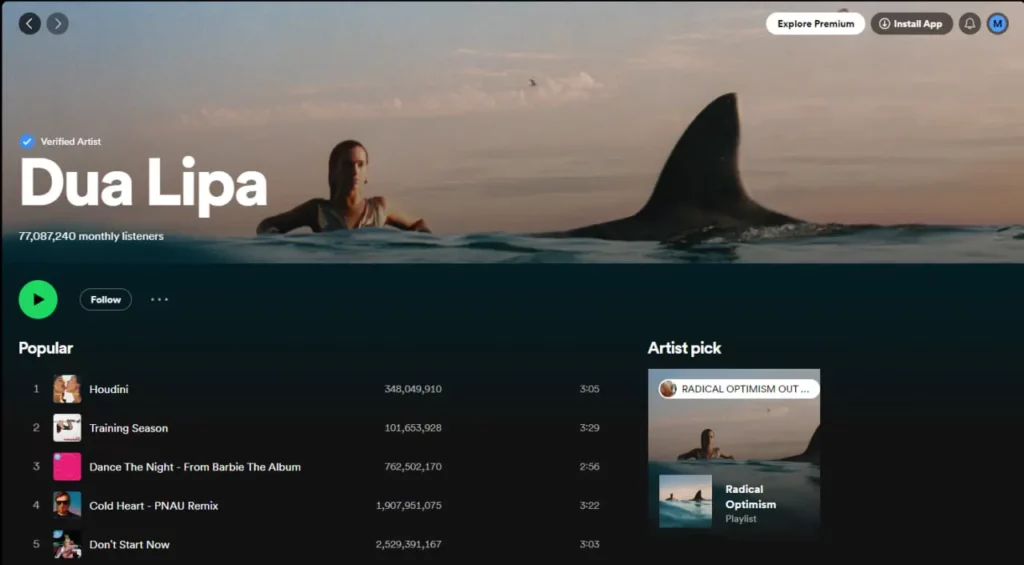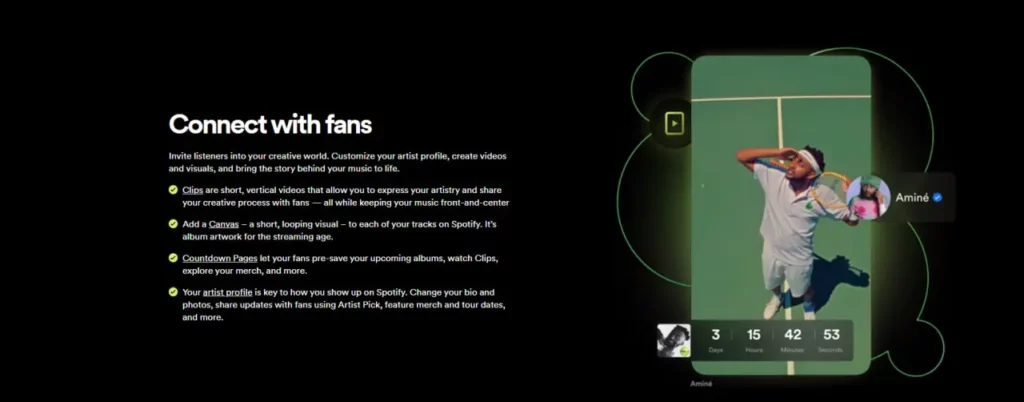Learn the Spotify Algorithm to Get Excellent Performance
Spotify algorithm is a crucial element that keeps your music alive and pushes it through. This algorithm is an AI-based technology that analyzes the information about users, their activity, listening history, and other data to offer better recommendations (for listeners) and recommend songs to those who enjoy their genres (for musicians).
This video gives a clear answer to the question “What is Spotify algorithm” and explains how it works.
Understanding the Spotify algorithm is even more important for musicians than for those who just listen to music. You should understand how the system reacts to your actions, what happens when you get additional engagement, and other essentials related to the algorithm. Moreover, with a better understanding of how the Spotify AI algorithm works, you will be able to organize better promotions and make your music more visible.
Spotify Algorithm: What is it?
The turning point in Spotify’s history happened in 2014 when the company acquired the music analytics firm The Echo Nest. Since the company specializes in harnessing the power of machine learning and natural language processing (NLP), the decision was made to implement AI-based technology into Spotify. This allowed Spotify to analyze music, artists’ profiles, and listening behavior to make the music discovery experience more effective. What exactly has changed?
- Songs and artists analysis. Spotify can now extract valuable insights about tracks and musicians on the whole platform. Due to that fact, the system analyzes the information not only from the audience but from the contextual elements as well. The algorithm considers elements like the song length, genre, mood, and tempo to create personalized playlists later. For example, Spotify gathers the songs you didn’t hear that relate to the genre you were listening to recently.
- The creation of music maps. Collaborative filtering, which is a crucial element of Spotify’s recommendation system, is used to create music maps for users. It’s like a real map where every song is a point. Still, you don’t need to find every point, so the algorithm highlights only the most important. Collaborative filtering takes into account your listening behavior and history. For example, if you listen to specific songs together, the system will move them close to each other on the music map.
Content-Based Filtering in Spotify Algorithm
Content-based filtering (CBF) is a brand new algorithm in the complex system of Spotify. It allows us to understand users’ tastes better and give better recommendations. CBF deeply analyzes metadata, analyses raw audio files, and also takes into account cultural context. Combined with other methods of analysis, this technology offers a better experience and provides you with a better playlist suggestion. This allows users to minimize their cognitive load when searching for new music.
To optimize personal recommendations, Spotify’s algorithm takes into account the following data:
| Metadata Insight | Description |
| Release Date | The date when a song was officially launched offers insights into its era and historical context. |
| Label | The record label associated with the track reflects the artist’s affiliations and musical style. |
| Artist | The creator of the track influences its genre, sound, and narrative. |
| Album | The collection of tracks that the song is part of contributes to its thematic context. |
| Genre | The musical category the track belongs to gives listeners an idea of its sonic characteristics. |
| Duration | The length of the track in minutes and seconds, impacting its structure and listener engagement. |
| Key Signature | The tonal center of the track affects its mood and emotional resonance. |
| Mode | Whether the track is in a major or minor key influencing its overall feel. |
| Time Signature | The rhythmic structure of the track shapes its tempo and groove. |
| Tempo | The speed of the track’s rhythm is measured in beats per minute (BPM). |
| Explicit Content | Indicates whether the track contains explicit or sensitive content. |
| Language | The language of the track’s lyrics or vocals caters to linguistic preferences. |
| Instruments | Instruments used in the composition influence its sonic palette. |
| Featured Artists | Additional artists contributed to the track, diversifying its musical elements. |
| Collaborators | Producers, songwriters, and contributors involved in the creation process. |
| Producer | The person overseeing the production of the track shapes its sound quality. |
| Lyrics | The words convey the song’s emotions, stories, and themes. |
| Cover Art | The visual representation associated with the track contributes to its aesthetic appeal. |
| Music Video | If available, the visual accompaniment to the track enhances the overall experience. |
| Cultural Context | How the track is discussed in articles, blogs, and media, capturing its broader significance. |
| Geographical Origin | The place or culture of the track is associated with adding a layer of cultural relevance. |
Additional metrics are also part of Spotify’s algorithm. We are talking about the mode of the track (major or minor), loudness, speechiness, liveness, danceability, energy, etc. These points are used to describe the sonic characteristics of the music.
In the video below, you will find a detailed explanation of Content-based filtering and other technologies that are a part of Spotify algorithm.
Analyzing Music-Related Content
Music is not limited by platforms or websites. It’s spread across the Internet, and you can find the path of your favorite tracks in articles, blog posts, videos, etc. Moreover, each song has its geographical, historical, and social background. By listening to a specific song, we can discover something that has been hidden for a long time.
Spotify analyzes the content where the song is described or mentioned to offer more personalized recommendations for listeners. News, articles, reviews, comments, and other information are analyzed via natural language processing (NLP). This technology allows us to find connections between songs, musicians, and user preferences.

Discover more about natural language processing to understand how it works inside the Spotify algorithm.
How Does Spotify Personalize Content for You?
The Spotify algorithm goes beyond just fitting your mood. It literally becomes a part of your surroundings, suggesting tracks and playlists that fit your mood. Still, it’s not just about knowing how your day is going. The algorithm analyzes several factors to figure out what’s the best option for you.
- Time of the day. Whether it’s early morning, midday, or midnight, your music preferences change. Spotify uses this information to search for new playlists and give you better recommendations.
- Your location. The place you are located when listening to music also matters. Whether you are at home, at the city center, or exploring new places abroad, Spotify considers such factors, too. Geolocation is used to find the music that fits your vibe and makes you satisfied.
- Weather. Even the weather is a crucial factor in deciding what suggestions you will have on Spotify. Whether it’s dark and rainy or dry shine and dry, Spotify will give you different recommendations.
- Listening Habits. This factor is also the one that can’t be ignored. If you enjoy listening to chill music during your working hours, you will have these specific songs in your recommendation list. Spotify remembers what you were listening to recently, and depending on the trend, it will create a special mix.
The main benefit of such an approach is its seamlessness. Since you change your schedule and behavior, the system adapts to new patterns and offers you something you may want to hear. It’s not only about giving you the music you may want to hear but also about the music that resonates with your current state.
How to Master the Spotify Algorithm for Music Promotion?
The Spotify algorithm guidelines may not be complete and clear since they only contain basic information about the system. You will only deal with facts you already know, but you won’t be able to adapt them to your needs. The main issue new artists face when entering the platform is a cold start problem. Individuals who have the talent and passion to conquer Spotify and become famous just don’t know how the platform’s algorithm works.
Cooperate With Playlist Curators
To find your audience and increase the listener count, the algorithm needs historical user interactions. Still, where to get them if you are only at the beginning of your path? The best option at this point is to trust your Spotify playlist to playlist curators. These people curate the playlists manually by gathering tracks related to similar topics, genres, etc. Later, these playlists are spotted by listeners, and that’s where you get your first streams. Cooperation with playlist curators is a nice option to avoid cold start problems and keep going.
Customize Your Profile
The profile’s visual appearance also matters for the Spotify algorithm. If you want to be recognized and followed, you have to create an eye-catching profile. Think of a short but informative bio that represents yourself as a music creator. Also, add a recognizable profile image and a background image that resonates with your music style. If you imagine a character you personify yourself with, hire a designer to recreate it. Remember about links to social media profiles as they help your audience to learn more about you.

Another important thing about profile customization is to join Spotify for Artists. This is a solid amplification for you as a creator because you can track engagement, access advanced analytics, and customize your content. The changes you make directly impact the Spotify algorithm (for example, songs with images become more visible). You will understand what your audience likes the most and what does not work for them. You can analyze the time they stream your music and create a custom posting schedule.

Spotify for Artists allows you to expand your customization capabilities, create pages for pre-saved tracks, record clips, and unlock dozens of other features.
Create Your Own Playlists
In addition to adding your songs to curated playlists, you can create your own personal compilations. Whether it’s a mood playlist or a daytime playlist, feel free to create several combinations of songs and add them to your Spotify profile.
Use Promotion to Become Recognizable on Spotify
Sometimes, even when people do everything right and follow the tips, they can’t achieve the desired engagement or surpass a specific number of listens. They can’t grow because the music recommendation engine doesn’t see progress. How to escape the problem? Get high-quality promotions and give your music a powerful boost. You don’t need to think about how to change Spotify algorithm. Instead, focus on the quality of your music and launch a promo campaign to maximize the effect. Get more plays, likes, and listeners, or use combined services to get everything at once. The bigger the package you order, the longer the execution will be, so be patient and watch how the engagement grows.
Understanding the Spotify algorithm may look tough, especially if you see how much information you need to learn. Still, it becomes much easier to master the algorithm of Spotify when you implement your knowledge in practice. Work consistently, monitor the changes, and search for new ideas to distribute your music worldwide.
How does the Spotify Algorithm Work?
The algorithm analyzes the song’s metrics (genre, tempo, length, lyrics, etc.) to capture the essence of the track and improve recommendations.
Why It’s Important to Listen to the Song for at Least 30 Seconds?
If a user listens to the first 30 seconds, the algorithm recognizes it as a stream. Still, if a person skips the song, it’s a negative signal for the system.
Does the Spotify Algorithm Consider Repeat Plays as Streams?
The Spotify Algorithm considers repeating plays as streams. Also, when people listen to your music on repeat, you receive additional revenue.
